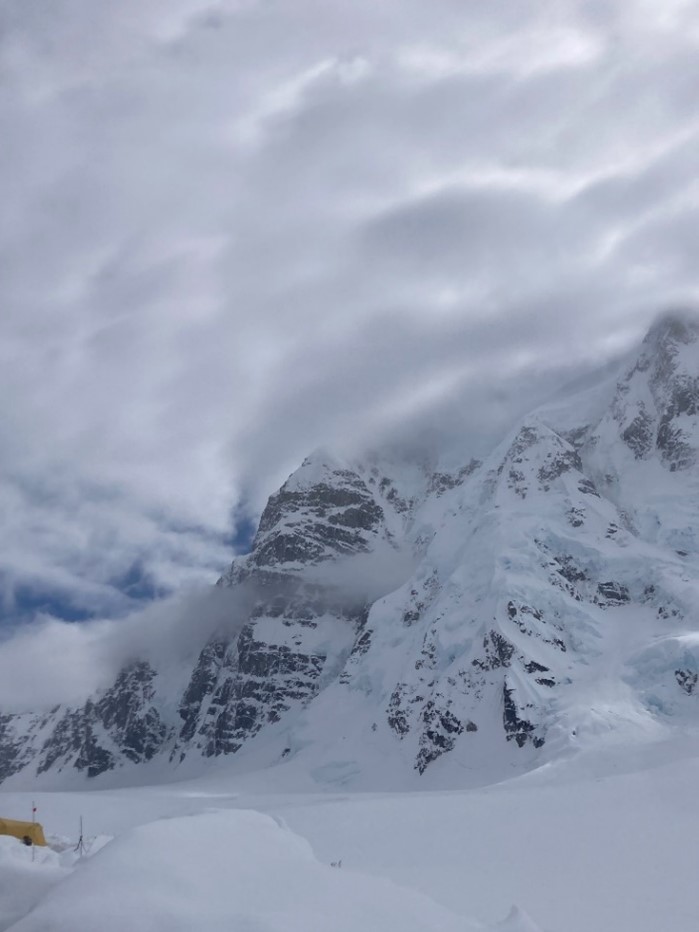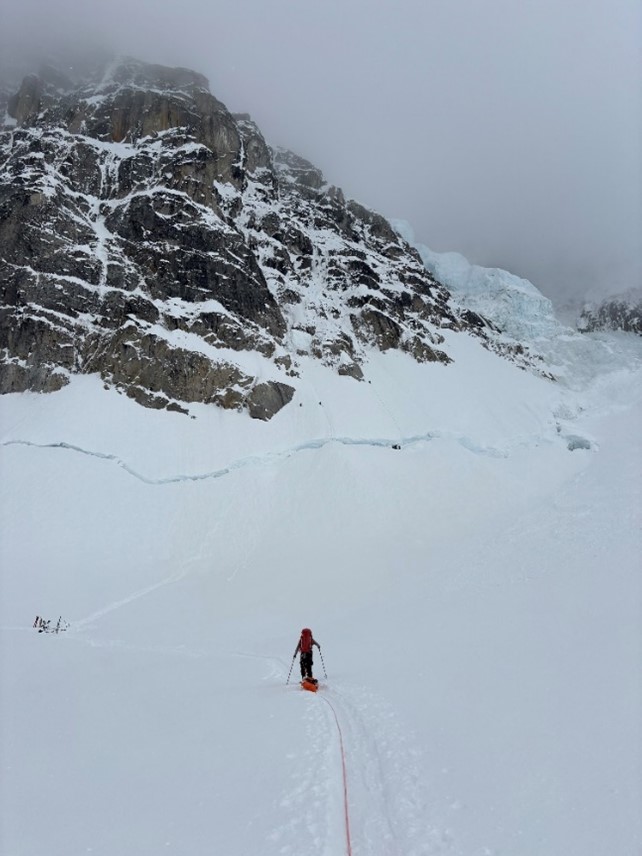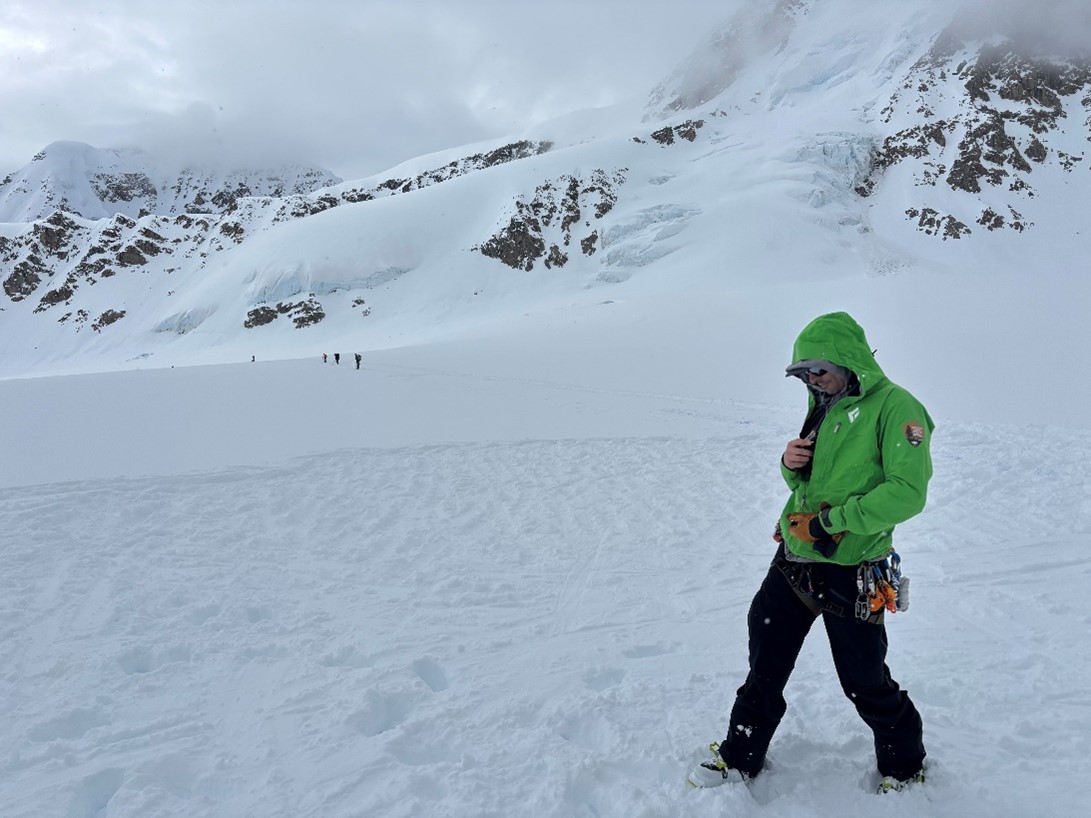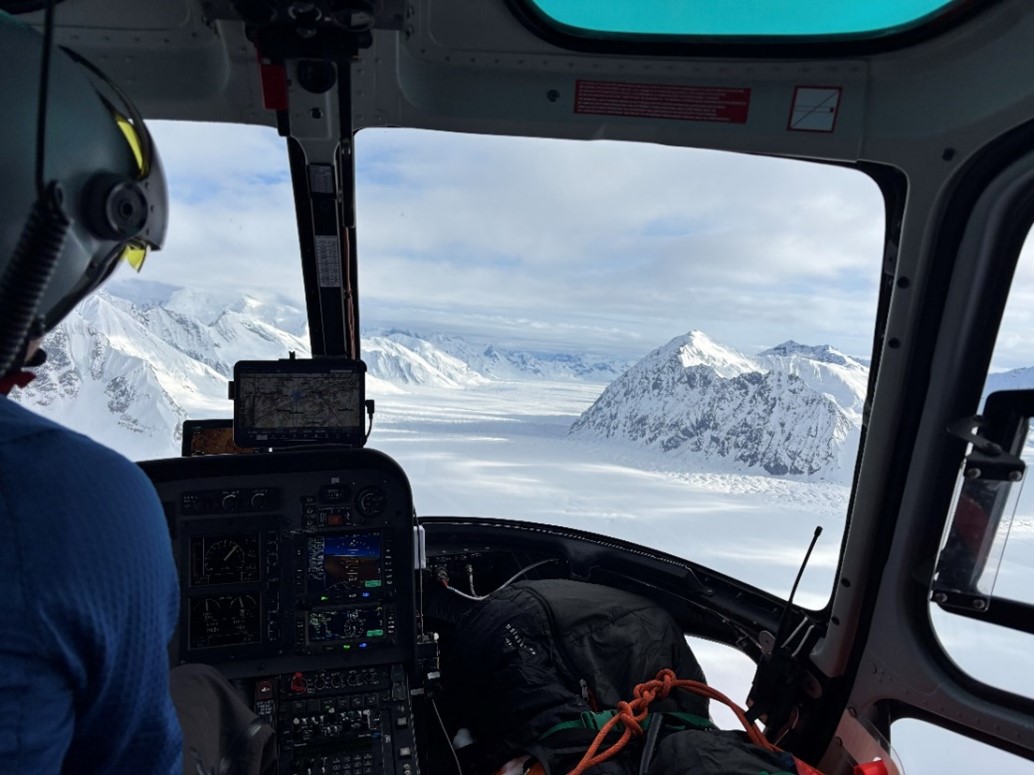Registered climbers - 936
Climbers on the mountain - 230
Climbers done and off the mountain - 17
Rescue from the North Buttress of Mt. Hunter

North Buttress of Mt. Hunter on the afternoon of the rescue. (Photo: Gabby Faurot)
On Saturday, May 17, NPS rangers in Talkeetna received a call for assistance, off the North Buttress of Mt. Hunter, for a climber with a broken ankle. The alert was received via an inReach SOS activation, and the coordinates showed the climbing party partway up the route known as “Deprivation”, which is a long and technical alpine route rated AI6 M6 R. As field resources began equipping for a response, coordinating team members began a deep dive into current and projected weather forecasts to better understand if aviation response was even a possibility. Weather across the Alaska Range has been unsettled and flyable conditions have not been predictable.
Live weather observations and photos from the Base Camp Manager as well as NPS patrols at 9,800’ and 14,000’ depicted flyable conditions with light winds and a dropping cloud ceiling. During this time, information filtered in that a climber had taken a 50-foot lead fall and had broken his leg during the event. Additionally, a second team of 2 climbers was on the route and was assisting to lower the patient 8+ pitches to the base of the route.
Three NPS rangers launched via the National Park Service contract helicopter and were able to locate the descending party during their initial reconnaissance flight. Due to weather conditions on scene, rangers were inserted at Base Camp and decision was made to responded via ground response. One ranger remained in Base Camp to coordinate the operation and manage communications while two rangers made their way to the base of the route on skis. During this time, the climbers continued to lower the patient and rappel through technical terrain to the base of the route.

NPS Rangers approaching the base of the North Buttress. (Photo: Scotty Barrier)
Rangers were able to rendezvous with the climbers below the bergschrund, where the patient was assessed, the injury was splinted, and the patient was packaged into a litter. With the aid of additional climbers on the scene, the subject was lowered an additional 60m to flat ground where the litter was able to be pulled to a safe location. Once a safe and suitable landing site was established, independent climbers roped up and spaced out down the glacier, to give the pilot better visual reference for a flat light landing on the glacier. The injured climber was loaded internally and flown back to Talkeetna for further medical evaluation and treatment.

Rangers awaiting arrival of the NPS helicopter.
The Denali Climbing Rangers would like to thank the fellow climbers that assisted in this rescue and highlight the importance of self-rescue when embarking on climbs around the Alaska Range. The outcome of this incident was a positive one, due to many factors but could have looked very different if the weather hadn’t held or additional climbers hadn’t arrived on scene.
Some key take-aways from this incident:
- Carrying some form of emergency communication is invaluable when notifying and coordinating with emergency resources.
- With the assistance of another climbing party, the group was able to selfrescue out of technical terrain. When embarking on sustained and technical alpine routes, climbing teams need to ensure their own proficiency in self-rescue, as NPS assistance is not always possible and arrival times on scene can be protracted.
- Unsettled weather patterns make it difficult to predict the forecast and clouds or valley fog can quickly inhibit NPS resources from responding to an emergency.
- When climbing in the Alaska Range, climbers should consider how developing weather could impact their ability to bail off a route or selfrescue in the event of emergency. Don’t climb up into poor weather.

Views down the lower Kahiltna Glacier while en-route to Talkeetna. (Photo: Scotty Barrier)
DISPATCH WEATHER DISCLAIMER: The National Weather Service issues a daily recreational climbing report which can be found here (note: the URL has changed from past years and the old one is no longer operational). Many other useful weather products including temperature, wind, and snowfall totals can be found through Mountain Weather.
